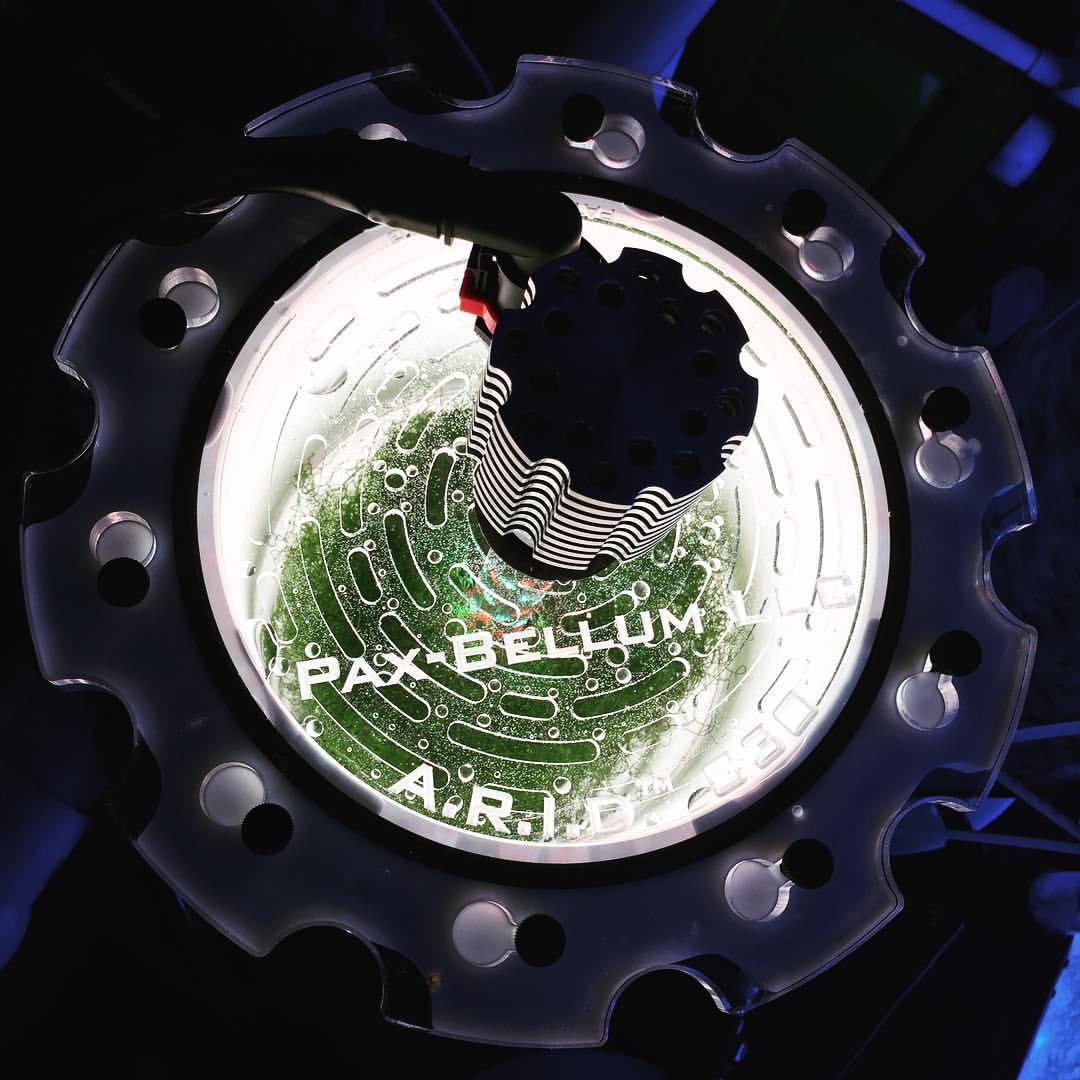The marine aquarium hobby is always on the lookout for ever simpler and more effective ways to reduce nutrients in our tanks. The A.R.I.D. devices from Pax-Bellum are a new way to apply intensive macroalgae scrubbing to nutrient reduction, making something old, new again.
The concept of using algae scrubbers as a form of nutrient control, management and export is as old as the reef keeping hobby itself. Walter Addey patented the algae turf scrubber many decades ago, and broadly defined ‘refugium’ have been touted as an evolution of using algae as part of the aquarium filtration.
But one thing is certain with reef aquarists, and that is that we prefer to use macroalgae for nutrient export over microalgae, and chaetomorpha is our algae of choice. The giant rotating ball of chaetomorpha is one way to create an intensive macroalgae scrubber, but for those of us with more limited space in and around the tank, the A.R.I.D. Chaeto filters might be a better choice.
We spotted one of the first concept A.R.I.D. Chaetomorpha chambers in use at Pratt Institute several years ago, making note of this curiosity but never really thinking that it would become a commercial product. Fast forward a few years and dozens of reef tank installations including positive testimonials from a myriad of veteran reefers, and the A.R.I.D. is now a real device that you can buy from Pax Bellum.
The A.R.I.D. acronym stands for Algae Remediation Illuminated Device, and the little chamber is specially engineered to grow the heck out of macroalgae for nutrient export from our aquariums. Functioning much like a typical media reactor, the ARID has barbs for incoming and outgoing water, with the only real difference being a central illumination column.

Unlike typical top-down lighted macroalgae chambers, the central ‘light pole’ of the ARID saturates the Chaetomorpha from the inside, with a white walled chamber that reflects light back into and throughout the unit. The very bright and nutritious light levels within the A.R.I.D. is what contributes to its efficacy as a technical form of biological nutrient export.
Many reefers have ditched the now-conventional carbon dosing techniques in favor of this intensive chaetomorpha contraption as the main tool for removing unwanted phosphates and nitrates from their reef aquaria. One particularly convincing example of ARID as a nutrient export device comes from the successful management of nutrients from a 2200 gallon reef aquarium system using a series of Pax-Bellum’s largest ARID filters.
In addition to removing unwanted nutrients from the aquarium water, the the algae within the ARID filters will also suck down the carbon dioxide in the aquarium water. The pull-down of carbon dioxide has the effect of boosting pH levels and subsequent coral growth, and they are a perfect place to direct the CO2-ladden effluent from calcium rectors.
Pax-Bellum’s website is currently down for maintenance, but we look forward to their return with full details of their various filters, sizing and pricing.




